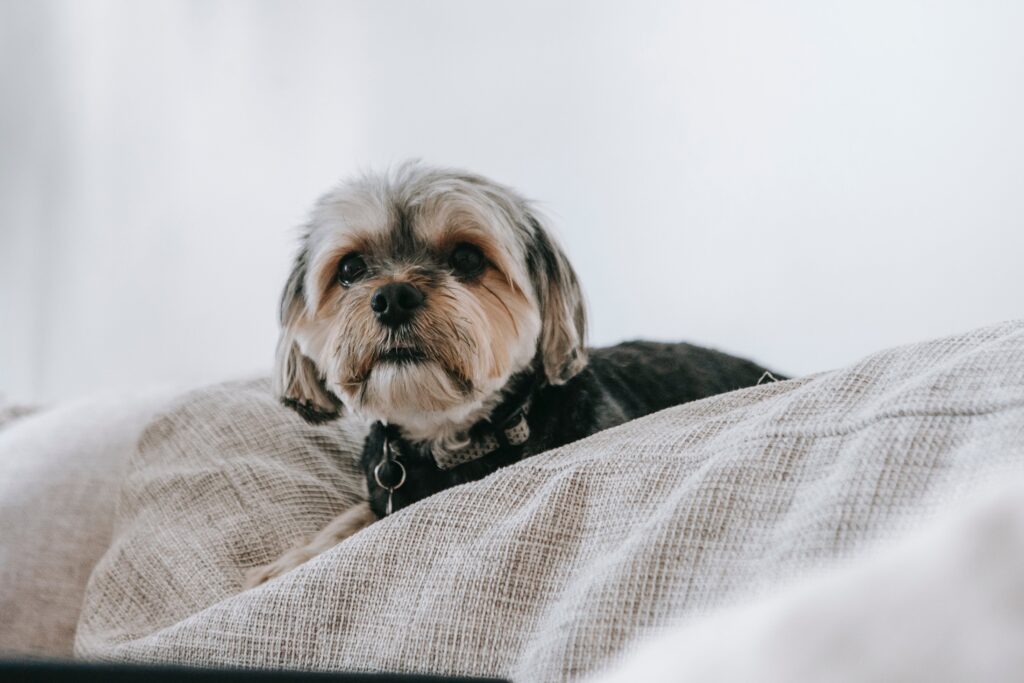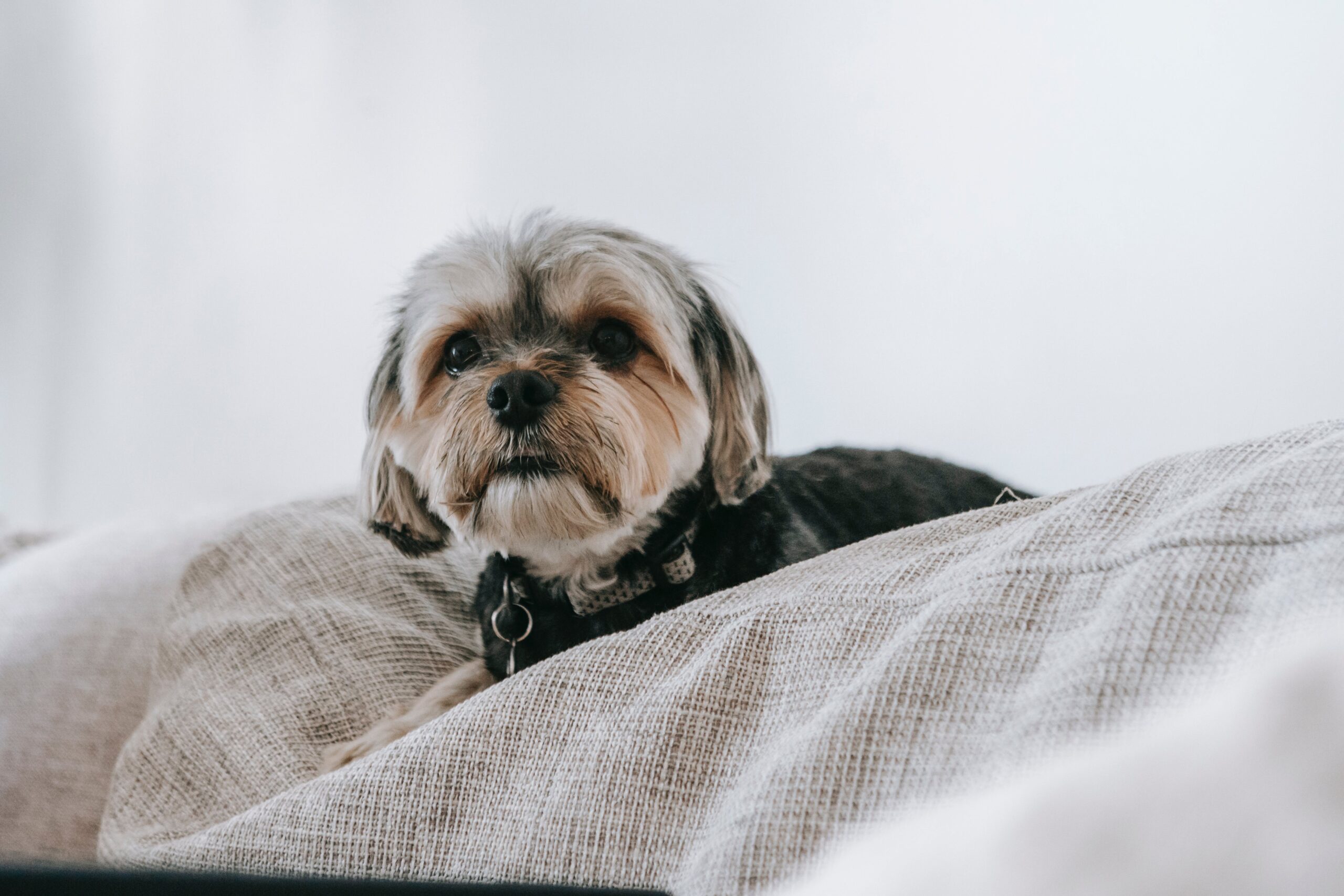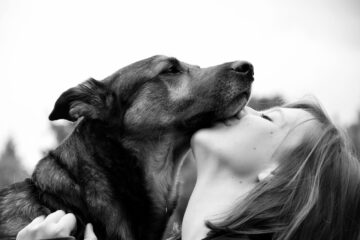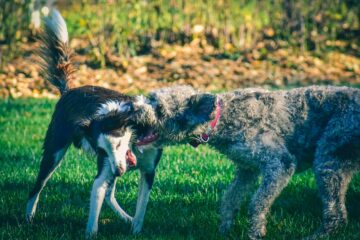Welcome to the journey of harmonious living with your furry friend!
If you’ve ever found yourself wondering how to train your dog to behave in the house, you’re in the right place.
Creating a well-mannered canine companion starts with effective training techniques and a sprinkle of patience.
In this guide, we’ll explore essential 13 tips to instill good behavior in your dog, making your home a haven of tranquility.
Let’s dive into the art of training and discover the keys to a well-behaved and enjoyable coexistence.
Table of Contents
How to Train Your Dog to Behave in the House – Mastering House Etiquette

1] Establish Clear Rules: Define Boundaries from the Start
Overview: “Set clear rules and boundaries from the beginning for designated areas, furniture permissions, and mealtime routines.”
Setting clear rules and boundaries is fundamental for a harmonious living environment with your dog.
Clearly communicate whether certain areas are off-limits, establish furniture permissions, and maintain consistency in mealtime routines.
Dogs thrive on structure, and well-defined rules help them understand expectations, creating a secure and well-behaved canine companion.
2] Positive Reinforcement: Reward Good Behavior
Positive reinforcement is a powerful tool for shaping your dog’s behavior.
Whenever your dog exhibits good behavior, such as following commands or using designated areas, use treats, praise, or playtime to reward them.
Consistency in positive reinforcement creates a positive association with desired actions, motivating your dog to repeat these behaviors.
Tip: “Consistency in rewarding positive behavior encourages your dog to repeat these actions.”
3] Basic Obedience Training: Lay the Foundation
Investing time in basic obedience training lays the foundation for effective communication between you and your dog.
Commands like sit, stay, and come are not only practical for day-to-day interactions but also enhance the bond between you and your furry friend.
Regular practice builds confidence and reinforces the mutual understanding necessary for a well-behaved dog.
4] Create a Designated Rest Area: Establish a Safe Space
Overview: “Designate a specific area for your dog’s rest and relaxation, promoting a sense of security.”
Designating a specific rest area for your dog, whether it’s a cozy bed or crate, establishes a safe and comfortable space.
Reinforce the idea that this space belongs to them, providing a retreat where they feel secure and minimizing disruptive behavior.
Having a designated rest area is especially beneficial during times of stress or when your dog needs downtime.
5] Consistent Daily Routine: Foster Predictability
Dogs thrive on routine, and establishing a consistent daily schedule is crucial for their well-being.
This routine should encompass meals, walks, playtime, and rest.
Predictability reduces anxiety, as your dog learns to anticipate specific activities.
A structured routine fosters a calmer living environment and helps your dog feel secure.
Tip: “Predictability reduces anxiety and contributes to a calmer living environment.”
6] Socialization: Introduce Your Dog to Various Settings
Controlled socialization is vital for a well-adjusted dog.
Expose your dog to various environments, people, and animals in a positive and controlled manner.
This minimizes anxiety in unfamiliar settings and ensures that your dog remains calm and well-behaved, even in new situations.
7] Chew Toy Arsenal: Redirecting Destructive Chewing
Dogs have a natural instinct to chew, and providing a variety of chew toys helps redirect this behavior away from your furniture.
Regularly rotate toys to keep them interesting and engaging for your dog.
A well-stocked chew toy arsenal satisfies their need to chew and promotes dental health.
• Regularly rotate toys to keep them interesting • Well-stocked chew toy arsenal satisfies the need to chew • Promotes dental health and prevents damage to furniture.
8] Leash Training Indoors: Reinforce Walking Etiquette
Reinforcing walking etiquette indoors through leash training is essential for enjoyable walks.
Use treats and positive reinforcement to encourage walking without pulling.
This practice not only ensures a well-behaved dog during outdoor walks but also strengthens the bond between you and your dog.
9] Regular Exercise: A Tired Dog is a Well-Behaved Dog
Regular exercise is key to preventing hyperactive or destructive behavior.
Tailor activities to your dog’s breed, age, and energy level.
A tired dog is not only physically healthier but is also more likely to exhibit well-behaved behavior indoors.
Engage in activities that stimulate both the body and mind.
Tip: “Tailor activities to your dog’s breed and energy level for optimal results.”
10] Potty Training: Consistency is Key
Consistent potty training is crucial for maintaining a clean and comfortable indoor environment.
Establish a routine for bathroom breaks, reward successful outings, and promptly clean accidents with an enzyme cleaner to deter repeat incidents.
Consistency is key to reinforcing the desired behavior of using designated areas for potty breaks.
In consistency, a well-behaved dog finds the path to a reliable bathroom routine
11] No Jumping Rule: Discourage Jumping on People
Teaching and enforcing a “no jumping” rule is essential for polite greetings.
Discourage jumping on people by redirecting the behavior with a sit command.
Consistently rewarding the sit reinforces the desired greeting behavior, fostering positive interactions with both family members and guests.
Tip: “Rewarding the sit reinforces the desired greeting behavior.”
12] Avoid Punishment: Opt for Positive Corrections
Choosing positive corrections over punishment creates a more effective and positive learning environment for your dog.
Redirect unwanted behavior and reinforce positive actions with rewards.
Positive corrections build trust and encourage your dog to engage in desirable behaviors, promoting a strong and respectful bond.
• Redirect unwanted behavior and reinforce positive actions • Positive corrections create an effective and positive learning environment • Build trust and encourage desirable behaviors for a strong bond.
13] Professional Training Classes: Seek Expert Guidance
Professional training classes provide expert guidance for addressing specific challenges and refining your dog’s behavior.
Certified trainers offer personalized instruction in a controlled environment, enhancing the effectiveness of your training efforts.
Enrolling in professional classes not only helps address behavioral issues but also strengthens the bond between you and your dog through structured learning experiences.
Tip: “Professional classes enhance the effectiveness of your training efforts.”
How to Train Your Dog to Behave in the House: FAQs
How long does it take to train a dog to behave indoors?
Training timelines vary, but consistency is key. With regular training efforts, you can observe positive behavioral changes within a few weeks. Patience and ongoing reinforcement contribute to long-term success.
Can older dogs be trained for house behavior?
Absolutely! While it may take more time, older dogs can learn and adapt to house rules. Patience and consistency are crucial for successfully training an older dog.
Should I use treats for every positive behavior?
While treats are effective, they can be supplemented with praise and playtime. Vary the rewards to keep your dog motivated and responsive to different forms of positive reinforcement.
What if my dog still exhibits undesirable behavior?
If undesirable behavior persists, consult with a professional trainer. They can assess specific challenges, tailor solutions, and provide guidance for effective behavior modification.

Conclusion:
Mastering how to train your dog to behave in the house is a rewarding endeavor that strengthens the bond between you and your canine companion.
By incorporating these proven training techniques, you can create a harmonious living environment for both you and your four-legged friend.
Consistency, positive reinforcement, and a touch of understanding will pave the way for a well-behaved dog, turning your house into a peaceful haven.
Start implementing these tips today and watch as your beloved pet transforms into the well-mannered house companion you’ve always envisioned.





